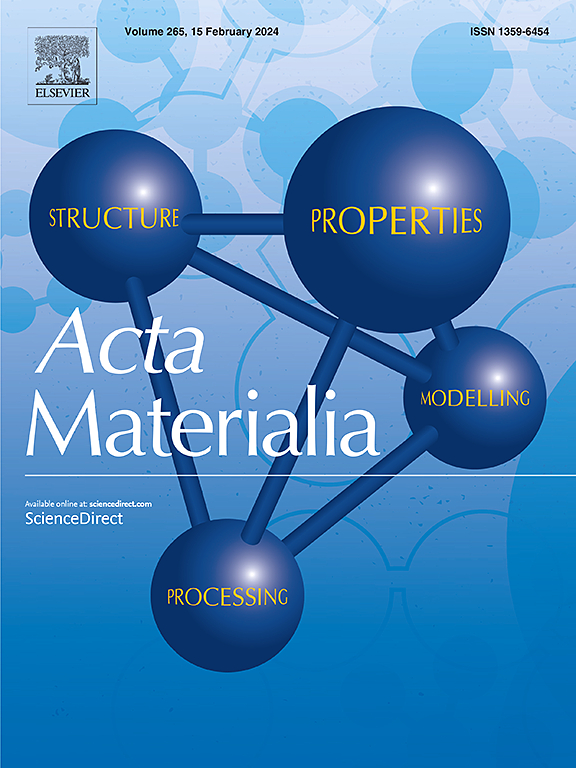高效不锈钢双功能水电解电极:激活OER中的OPM机制并提高HER性能
IF 9.3
1区 材料科学
Q1 MATERIALS SCIENCE, MULTIDISCIPLINARY
引用次数: 0
摘要
低成本、资源丰富、高效的双功能催化剂在推进制氢及其应用中发挥着至关重要的作用。本研究以廉价易得的不锈钢材料为基础,通过耦合界面和掺杂策略,设计并合成了一种高效、经济的不锈钢基双功能水电解电极(Ru-PSS)。具体来说,当电流密度为500 mA∙cm-2时,电极的析氢反应(HER)过电位仅为248 mV,析氧反应(OER)过电位仅为353 mV。值得注意的是,由Ru-PSS电极组装的对称阴离子交换膜(AEM)电解槽可以在仅1.82 V的低电压下实现500 mA∙cm-2的工业高电流密度。原位电化学傅里叶变换红外光谱(FTIR)实验进一步表明,电极参与了吸附演化机制(AEM)和氧化途径机制(OPM),两者共同促进了析氧反应。综合材料表征和密度泛函理论(DFT)表明,原位磷酸化在不锈钢表面合成异质结构(FeP4/Ni2P),为催化反应提供了丰富的活性位点。随后,微量Ru掺杂(Ru- fep4 /Ni2P)不仅通过优化氢吸附自由能(ΔGH*)显著提高了HER性能,而且通过调节电子结构激活了更具催化活性的OPM反应机制。本研究为开发高效、稳定的新型钢基电解催化剂提供了创新的设计思路和理论指导。本文章由计算机程序翻译,如有差异,请以英文原文为准。


Efficient stainless steel-based bifunctional water electrolysis electrode: Activating the OPM mechanism in OER and enhancing HER performance
Low-cost, resource-rich and efficient bifunctional catalysts play a crucial role in advancing hydrogen production and its applications. In this study, based on inexpensive and readily available stainless steel materials, we designed and synthesized an efficient and cost-effective stainless steel-based bifunctional water electrolysis electrode (Ru-PSS) through a coupling interface and doping strategy. Specifically, at a current density of 500 mA∙cm-2, the electrode exhibited a hydrogen evolution reaction (HER) overpotential of just 248 mV and an oxygen evolution reaction (OER) overpotential of only 353 mV. Notably, a symmetrical anion exchange membrane (AEM) electrolyser assembled with Ru-PSS electrodes can achieve an industrial high current density of 500 mA∙cm-2 at a low voltage of only 1.82 V. In situ electrochemical Fourier transform infrared spectroscopy (FTIR) experiments further indicate that the electrode involves the adsorption evolution mechanism (AEM) and oxide pathway mechanism (OPM), both of which jointly promote oxygen evolution reaction. Comprehensive material characterization and density-functional theory (DFT) indicate that in situ phosphorylation synthesizes heterostructures (FeP4/Ni2P) on the stainless steel surface, providing abundant active sites for catalytic reactions. Subsequently, trace Ru doping (Ru-FeP4/Ni2P) not only significantly improves the HER performance by optimizing the free energy of hydrogen adsorption (ΔGH*), but also activates a more catalytically active OPM reaction mechanism by modulating the electronic structure. This study provides innovative design ideas and theoretical guidance for the development of highly efficient and stable new steel-based catalysts for water electrolysis.
求助全文
通过发布文献求助,成功后即可免费获取论文全文。
去求助
来源期刊

Acta Materialia
工程技术-材料科学:综合
CiteScore
16.10
自引率
8.50%
发文量
801
审稿时长
53 days
期刊介绍:
Acta Materialia serves as a platform for publishing full-length, original papers and commissioned overviews that contribute to a profound understanding of the correlation between the processing, structure, and properties of inorganic materials. The journal seeks papers with high impact potential or those that significantly propel the field forward. The scope includes the atomic and molecular arrangements, chemical and electronic structures, and microstructure of materials, focusing on their mechanical or functional behavior across all length scales, including nanostructures.
 求助内容:
求助内容: 应助结果提醒方式:
应助结果提醒方式:


